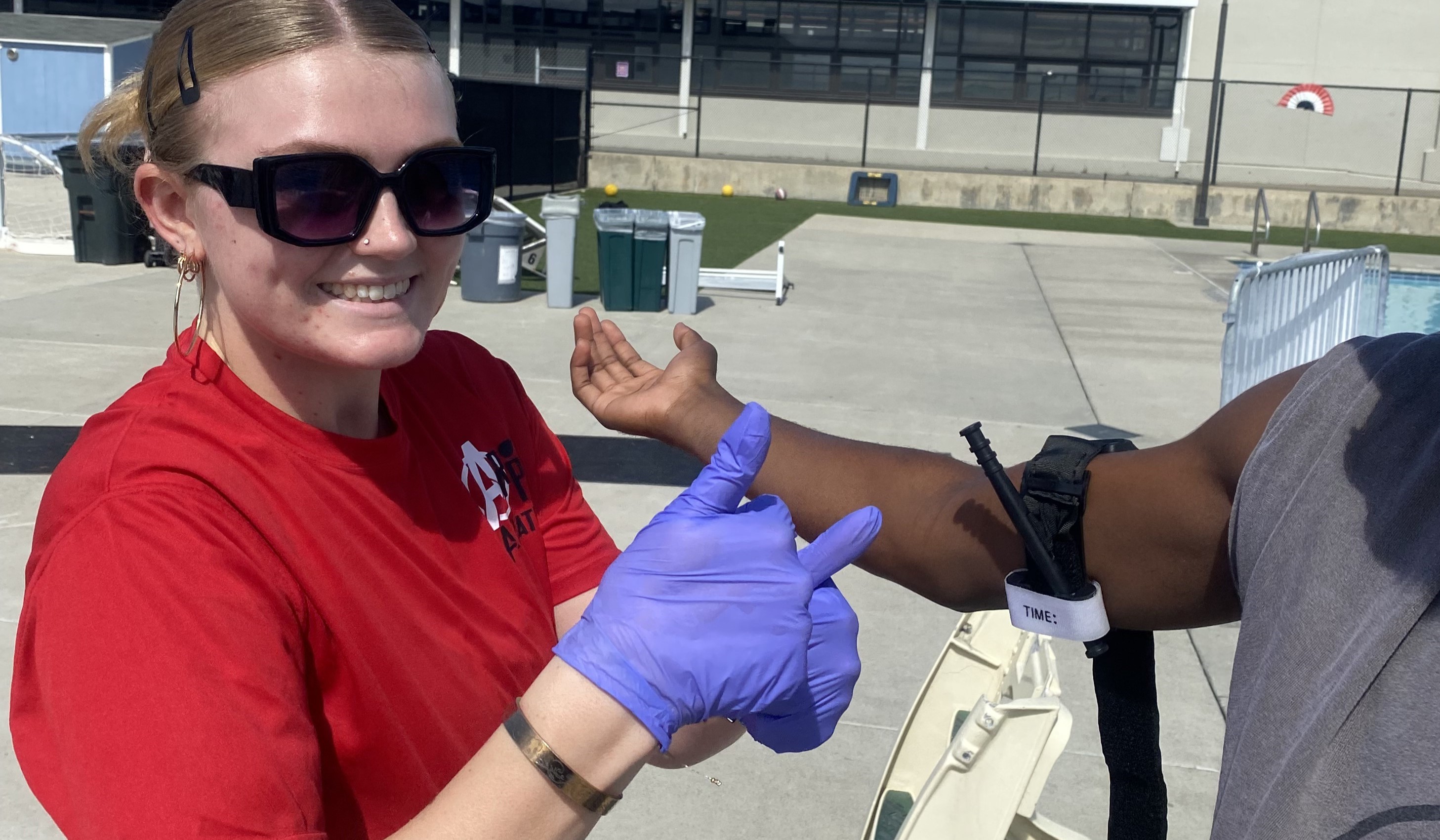Diatomaceous earth (DE) filters have the lowest micron rating of any style of pool filter — 1- to 6 microns. To put it into perspective, a grain of ordinary table salt is approximately 100 microns. A sand filter has a micron rating of 20 to 40, and cartridge filters come in at 5- to 20 microns.
The simple fact is, a DE filter can remove more and smaller pieces of dirt and debris from pool water than any other filter and thereby keep the water sparkling clean for swimmers.
Once you learn how a DE filter works, you can better understand how and why they need cleaning and re-earthing. A DE filter makes no sense when you think about it: You backwash the filter to clean it, then you put some kind of powder junk back into the filter. The most common question people ask when I re-earth a filter is: “Doesn’t the DE just clog the filter up again?” No, the DE is what does the filtering.
Inside all DE filters are grids — some round, some square, most semicircular — and these grids have a cloth-covered, plastic frame. Most people think it is this cloth that does the filtering, so what do you need the DE for? The answer is that it’s the DE, which packs up tightly onto the grids, that does the filtering. The DE on the grids is called a “filter cake,” and the water is filtered as it passes through the filter cake. The woven polypropylene cloth on the grid is specifically made to hold the DE in place.
Another misunderstanding about DE filters is that if you backwash them long enough, it is as good as opening the filter tank and cleaning the filter by hand. Wrong. All backwashing does is run the water backward through the filter. Because water takes the path of least resistance, backwashing will remove only part of the filter cake. To really clean a filter, you must open it and clean it all.
Though all DE filters work the same way, some can be backwashed while others cannot.
A non-backwashable filter is much harder to clean because every piece of dirt that filter has trapped since the last time it was cleaned is still in there.
A backwashable filter is the easiest to clean because you can backwash the filter into the sewer before starting to clean it. It’s hard to believe, but thousands upon thousands of pools were built with no way to run the dirty backwash water into the sewer as it came out of the filter. In the days those pools were built, you could just run a vac hose out to the street and dump your dirty water there. Not anymore.
Now, in most cities, you can get fined for running clean pool water down the street, let alone dirty backwash water.
Remember, many cities and counties have specific regulations controlling the disposal of spent DE, with some even requiring that the dirt be stored in a container and disposed of at a designated location.
To avoid legal issues for yourself and your customer, get up to speed with local ordinances. A quick call to your local health department should give you the information you need.
Finally, I would like to point out one major misconception that many new pool technicians and homeowners have when it comes to filters. A filter can only remove solid particles from water — it cannot purify the pool water. Bacteria and other contaminants are smaller than one micron and can pass right through the filter. To purify water, you must use a sanitizer such as chlorine.
PSN thanks Howard Weiss, owner of Contemporary Watercrafters in Gaithersburg Md., for sharing his expertise in this series of videos.
The acid treatment
If the grids have become plugged with suntan oils or covered in scale (scale shows up on the grids as a yellow tinge or discoloration), soak them overnight in a solution of TSP or dishwasher detergent and gently clean with a hose. Rinse completely.
Add a drop or two of muriatic acid to the grids; if they foam and bubble up, there is scale on the grids, and they will need to be washed in a mild muriatic acid solution (in a 5-gallon bucket, mix 10 parts water to 1 part acid). Place the grids in the bucket and, using a scoop, pour the solution over the grids. Note: There also are solutions on the market that contain a detergent as well as acid.
When the bubbling stops, rinse the filter completely with water, neutralize the acid water with soda ash, and dispose of the solution in an eco-safe manner. Turn the filter on immediately after reassembly or the residual acid will rust the filter.
Warning: If you acid-wash the grids before soaking them, the oils will become permanently attached to the grids, and they will need to be replaced.
Author: Robert H. Foutz, Jr., is owner of Purity Pool Service in
Huntington Beach, Calif.


